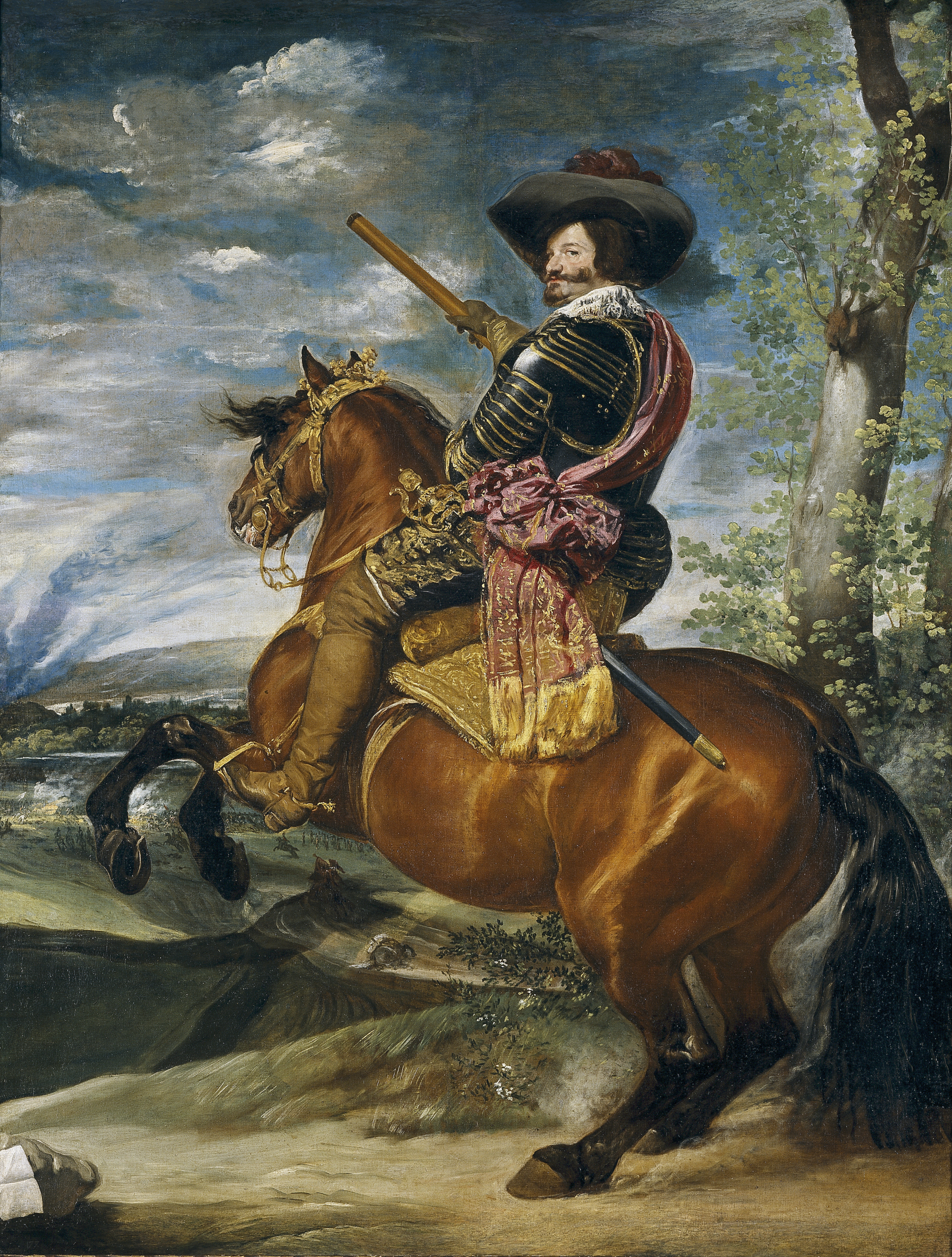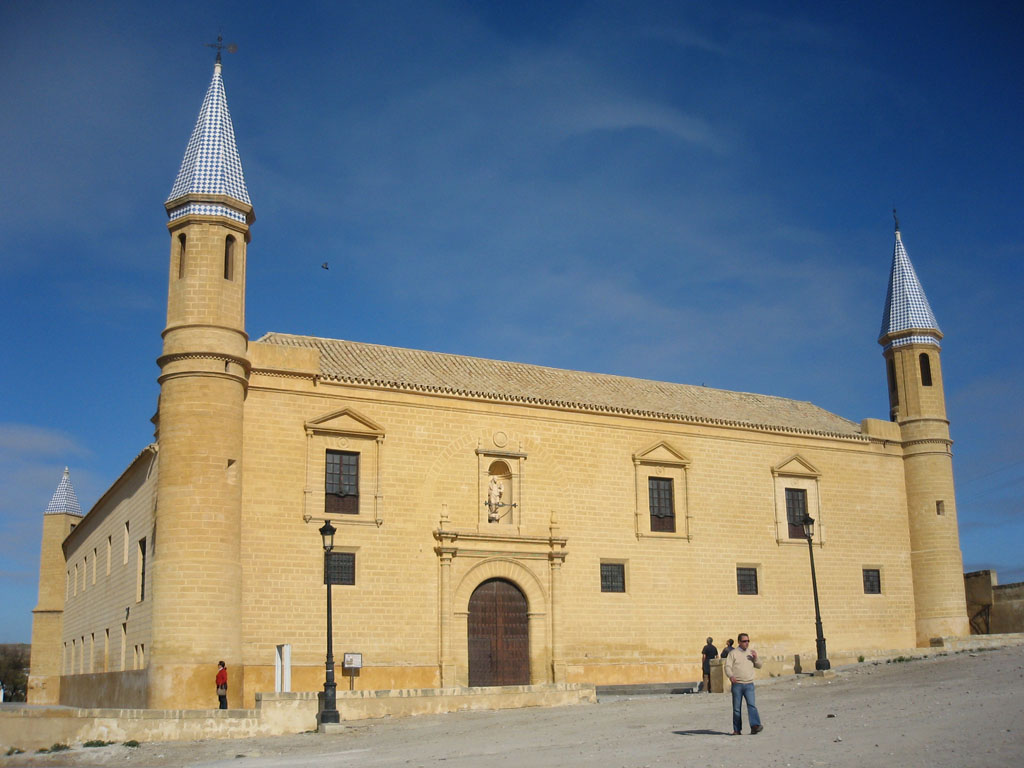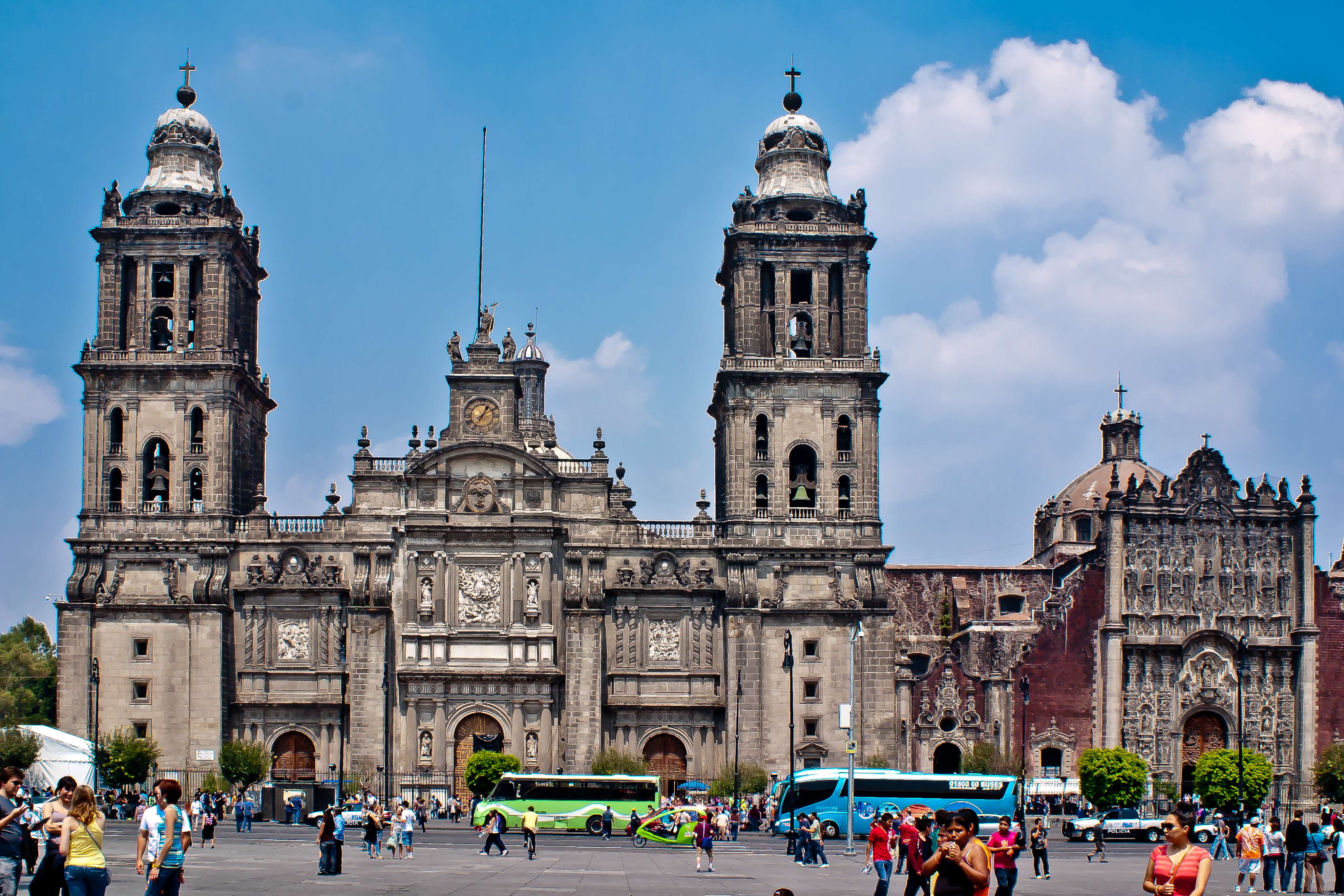|
Payo Enríquez De Rivera
Payo Enríquez de Rivera y Manrique, O.E.S.A. (also Payo Enríquez Afán de Rivera y Manrique or Payo Afán Enríquez de Ribera Manrique de Lara), (1622 – 8 April 1684) was a Spanish Augustinian friar who served as the Bishop of Guatemala (1657–67), Archbishop of Mexico (1668–1681) and Viceroy of New Spain (13 December 1673 – 30 November 1680). Ecclesiastical career Enríquez de Rivera was born in Seville, the illegitimate son of Fernando Afán de Ribera, duke of Alcalá de los Gazules and Leonor Manrique. He entered the Order of St. Augustine in Madrid. He graduated from the University of Osuna and then taught theology there and in Burgos, Valladolid and Alcalá. He came to know King Philip IV of Spain, who held him in high esteem. Enríquez was superior of various Augustinian monasteries in Castile. On 9 July 1657, Enríquez de Rivera was appointed the Bishop of Guatemala in the Viceroyalty of New Spain by Pope Alexander VII. He sailed to Caracas, where h ... [...More Info...] [...Related Items...] OR: [Wikipedia] [Google] [Baidu] |
The Most Reverend
The Most Reverend (abbreviated as The Most Revd or The Most Rev) is an honorific style (form of address), style given to certain (primarily Western Christian, Western) Christian clergy and Christian minister, ministers. It is a variant of the more common style "The Reverend". Catholic In the Catholic Church, two different systems may be found. In most countries, all bishops are styled "The Most Reverend", as well as monsignors of the rank of protonotary apostolic ''de numero''. In the United Kingdom, only archbishops bear the style "The Most Reverend", with other bishops styled "The Right Reverend". By custom, this title is used for the Minister general, ministers general of the various branches of the Order of Friars Minor as well as of the Third Order Regular of St. Francis. Eastern Orthodox In the Eastern Orthodox Church, Eastern Orthodox tradition, archbishops under the Ecumenical Patriarchate (those who are not the Primate (bishop), primates of autocephalous churches) and M ... [...More Info...] [...Related Items...] OR: [Wikipedia] [Google] [Baidu] |
Mariana Of Austria
Mariana or Maria Anna of Austria (24 December 1634 – 16 May 1696), was Queen of Spain from 1649 until the death of her husband Philip IV of Spain in 1665. Appointed regent for their infant son Charles II, she remained an influential figure until her death in 1696. Her regency was overshadowed by Spain's post-1648 decline and internal political divisions, combined with a general European economic crisis during the latter half of the 17th century. Her son's failure to produce an heir ultimately ended in the 1701 to 1714 War of the Spanish Succession. Birth and early years Maria Anna was born on 24 December 1634 in Wiener Neustadt, second child of Maria Anna of Spain and her husband Ferdinand (1608–1657), who became Holy Roman Emperor in 1637. Her parents had three children who survived into adulthood, Mariana and her two brothers, Ferdinand (1633–1654), and Leopold (1640–1705), elected emperor in 1658. In 1646, Maria Anna was betrothed to her cousin Balthasar Char ... [...More Info...] [...Related Items...] OR: [Wikipedia] [Google] [Baidu] |
Castile (historical Region)
Castile or Castille (; ) is a territory of imprecise limits located in Spain. The use of the concept of Castile relies on the assimilation (via a metonymy) of a 19th-century determinism, determinist geographical notion, that of Castile as Spain's ("tableland core", connected to the Meseta Central) with a long-gone historical entity of diachronically variable territorial extension (the Kingdom of Castile). The proposals advocating for a particular semantic codification/closure of the concept (a ''dialogical'' construct) are connected to Essentialism#In historiography, essentialist arguments relying on the Reification (fallacy), reification of something that does not exist beyond the social action of those Social constructivism, building Castile not only by Castilian nationalism, identifying with it as a homeland of any kind, but also Alterity, ''in opposition'' to it. A hot topic concerning the concept of Castile is its relation with Spain, insofar intellectuals, politicians, writ ... [...More Info...] [...Related Items...] OR: [Wikipedia] [Google] [Baidu] |
Philip IV Of Spain
Philip IV (, ; 8 April 160517 September 1665), also called the Planet King (Spanish: ''Rey Planeta''), was King of Spain from 1621 to his death and (as Philip III) King of Portugal from 1621 to 1640. Philip is remembered for his patronage of the arts, including such artists as Diego Velázquez, and his rule over Habsburg Spain, Spain during the Thirty Years' War. By the time of his death, the Spanish Empire had reached approximately 12.2 million square kilometres (4.7 million square miles) in area but in other aspects was in Decline of Spain, decline, a process to which Philip contributed with his inability to achieve successful domestic and military reform. He was succeeded on his death by his young son Charles II of Spain, Charles II as King of Spain and in 1640 (with the collapse of the Iberian Union) by John IV of Portugal, John IV as King of Portugal. Personal life Philip IV was born in the Royal Palace of Valladolid, and was the eldest son of Philip III of Spai ... [...More Info...] [...Related Items...] OR: [Wikipedia] [Google] [Baidu] |
University Of Osuna
The University of Osuna (), officially the ''Colegio-Universidad de la Purísima Concepción en Osuna'' ("College-University of the Immaculate Conception in Osuna") was a university in Osuna, Kingdom of Seville, Spain from 1548 until 1824.DECRETO 346/2004, de 18 de mayo, por el que se declara bien de interés cultural, con la categoría de monumento, el Colegio-Universidad de la Purísima Concepción en Osuna (Sevilla) Boletín Oficial del Estado, BOE, number 181, 2004-07-28Francisco Reyes El Cole ... [...More Info...] [...Related Items...] OR: [Wikipedia] [Google] [Baidu] |
Madrid
Madrid ( ; ) is the capital and List of largest cities in Spain, most populous municipality of Spain. It has almost 3.5 million inhabitants and a Madrid metropolitan area, metropolitan area population of approximately 7 million. It is the Largest cities of the European Union by population within city limits, second-largest city in the European Union (EU), and its wikt:monocentric, monocentric Madrid metropolitan area, metropolitan area is the List of metropolitan areas in Europe by population, second-largest in the EU.United Nations Department of Economic and Social AffairWorld Urbanization Prospects (2007 revision), (United Nations, 2008), Table A.12. Data for 2007. The municipality covers geographical area. Madrid lies on the Manzanares (river), River Manzanares in the central part of the Iberian Peninsula at about above mean sea level. The capital city of both Spain and the surrounding Community of Madrid, autonomous community of Madrid (since 1983), it is also th ... [...More Info...] [...Related Items...] OR: [Wikipedia] [Google] [Baidu] |
Archbishop Of Mexico
The Archdiocese of Mexico () is a Latin Church ecclesiastical territory or archdiocese of the Catholic Church that is situated in Mexico City, Mexico. It was erected as a diocese on 2 September 1530 and elevated to an archdiocese on 12 February 1546."Archdiocese of México" '' Catholic-Hierarchy.org''. David M. Cheney. Retrieved February 29, 2016"Metropolitan Archdiocese of México" ''GCatholic.org''. Gabriel Chow. Retrieved February 29, 2016 The archdiocese is one of the largest in the world, with over four million Catholi ... [...More Info...] [...Related Items...] OR: [Wikipedia] [Google] [Baidu] |
Spanish People
Spaniards, or Spanish people, are a Romance languages, Romance-speaking Ethnicity, ethnic group native to the Iberian Peninsula, primarily associated with the modern Nation state, nation-state of Spain. Genetics, Genetically and Ethnolinguistic group, ethnolinguistically, Spaniards belong to the broader Southern Europe, Southern and Western Europe, Western European populations, exhibiting a high degree of continuity with other Indo-European languages, Indo-European-derived ethnic groups in the region. Spain is also home to a diverse array of National and regional identity in Spain, national and regional identities, shaped by its complex History of Spain, history. These include various Languages of Spain, languages and dialects, many of which are direct descendants of Latin, the language imposed during Hispania, Roman rule. Among them, Spanish language, Spanish (also known as Castilian) is the most widely spoken and the only official language across the entire country. Commonly ... [...More Info...] [...Related Items...] OR: [Wikipedia] [Google] [Baidu] |
Coat Of Arms Of Payo Enríquez De Rivera
A coat is typically an outer garment for the upper body, worn by any gender for warmth or fashion. Coats typically have long sleeves and are open down the front, and closing by means of buttons, zippers, hook-and-loop fasteners (AKA velcro), toggles, a belt, or a combination of some of these. Other possible features include collars, shoulder straps, and hoods. Etymology ''Coat'' is one of the earliest clothing category words in English, attested as far back as the early Middle Ages. (''See also'' Clothing terminology.) The Oxford English Dictionary traces ''coat'' in its modern meaning to , when it was written ''cote'' or ''cotte''. The word coat stems from Old French and then -4; we might wonder whether there's a point at which it's appropriate to talk of the beginnings of French, that is, when it wa ... and then Latin ''cottus.'' It originates from the Proto-Indo-European language">Proto-Indo-European word for woolen clothes. An early use of ''coat'' in English is Mail ( ... [...More Info...] [...Related Items...] OR: [Wikipedia] [Google] [Baidu] |
Tomás De La Cerda, 3rd Marquis Of La Laguna
{{disambiguation ...
Tomás may refer to: * Tomás (given name) * Tomás (surname) Tomás is a Spanish, Portuguese, or Irish surname, equivalent of '' Thomas''. It may refer to: * Antonio Tomás (born 1985), professional Spanish footballer * Belarmino Tomás (1892–1950), Asturian trade unionist and socialist politician * ... [...More Info...] [...Related Items...] OR: [Wikipedia] [Google] [Baidu] |
Pedro Nuño Colón De Portugal, 6th Duke Of Veragua
Pedro Nuño Colón de Portugal y Castro, 6th Duke of Veragua, 6th Marquess of Jamaica, 6th Count of Gelves (Madrid, Spain, 13 December 1628 – December 8, 1673, Mexico City) was viceroy of New Spain from December 3, 1673, to December 8, 1673. Early life He was born in Madrid, the son of Álvaro Colón de Portugal y Portocarrero, 5th Duke of Veragua, 4th Duke of la Vega, 6th admiral of the Indies, and of Catalina de Castro y Portugal, 5th countess of Gelves, and descendant of the House of Braganza, distantly related to the Portuguese royal family. Career He was a knight of Order of the Golden Fleece, 1670, and also inherited the positions of admiral and governor of the Indies. He became the first viceroy of New Spain named under the authority of King Charles II. On April 28, 1672, Enrique de Toledo y Osorio, Marquess of Villafranca was named viceroy of New Spain, but he declined the post. Instead, Colón de Portugal was named viceroy on June 10, 1672, and he arrived i ... [...More Info...] [...Related Items...] OR: [Wikipedia] [Google] [Baidu] |
Juan Francisco De La Cerda, 8th Duke Of Medinaceli
Juan Francisco de la Cerda Enríquez de Ribera (Medinaceli, 4 November 1637 – Madrid, 20 February 1691), 8th Duke of Medinaceli, 7th Marquis de Cogolludo, 4th Marquis of Alcalá de la Alameda, 6th Duke of Alcalá de los Gazules, 9th Count of Los Molares, 9th Marquis of Tarifa, 8th Count of El Puerto de Santa María, was a Spanish noble and politician, and chief minister of King Charles II of Spain. During his tenure as chief minister of Spain (1680-1685), de la Cerda enforced a number of economic reforms aimed at reducing the galloping inflation, avoiding the permanent deficit, and filling the coffers of Spanish Monarchy. De la Cerda's policies achieved one of the largest deflations in history, which proved very beneficial to the King's subjects, increasing their incomes and purchasing powers. However, his measures failed to fill the royal coffers, led to food riots, and eventually caused his downfall in 1685. Most of his policies were nevertheless continued and expand ... [...More Info...] [...Related Items...] OR: [Wikipedia] [Google] [Baidu] |



